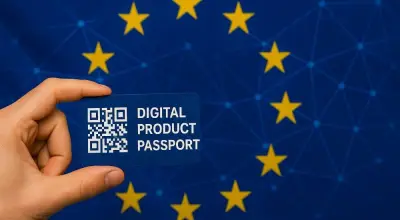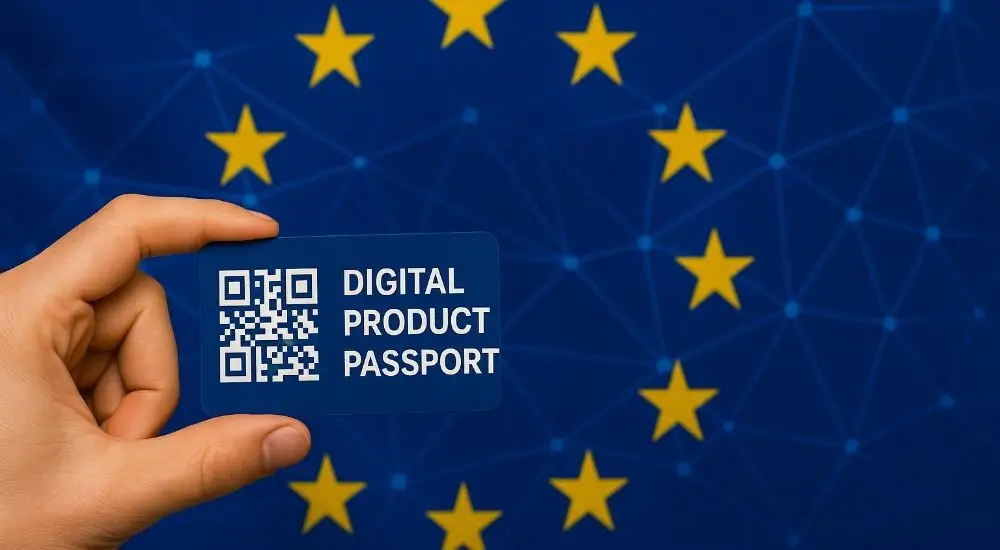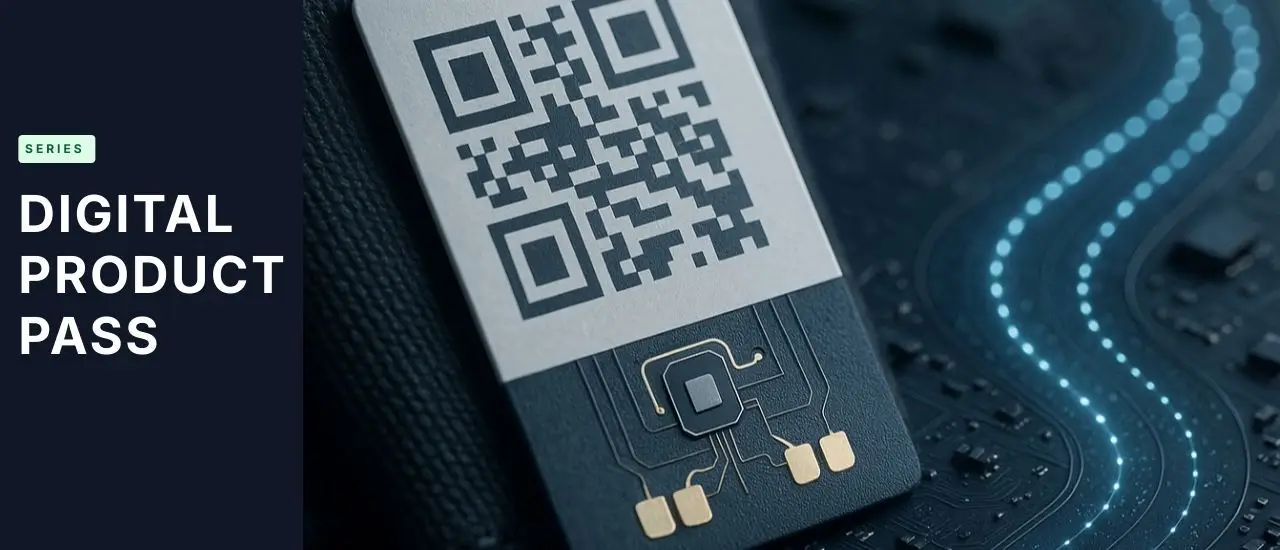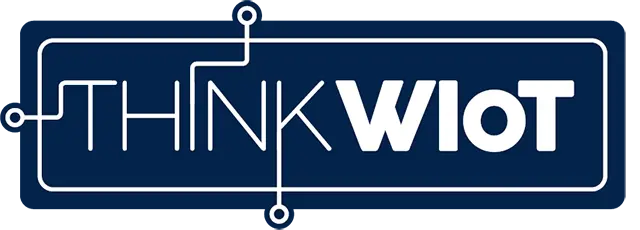Interview with Prof. Antonio Rizzi
1. Antonio, the introduction of an RFID Asset Tracking System can bring considerable savings. Why is this the case?

Antonio Rizzi is Full Professor of Logistics and Supply Chain Management at the Faculty of Industrial Engineering at the University of Parma. His research focuses on Auto-ID and data exchange technologies for supply chain management. This involves the question of how and where RFID contributes to value creation.
Prof. Antonio Rizzi: Regardless the industry and the type of assets, RFID enables efficient automatic, accurate and punctual AT and monitoring. With RFID, all assets can be uniquely identified through a tag that gives every single item its own identity (license-plate).
Each RFID tag is distinguished by a unique serial identifier that is impossible to duplicate, enabling the verification of the single asset's identity and authenticity. From IT equipment to medical devices and industrial machinery, all assets can be automatically identified, monitored and massively tracked in real time with RFID.
In many cases, the primary reason for implementing RFID for asset tracking is to reduce losses by enabling or improving visibility and traceability, but the benefits of using RFID to track assets are manifold. The need for accurate representation of assets on the company's balance sheet requires verification of their actual presence. Unlike error-prone manual inventories, RFID technology allows for precise, real-time tracking, ensuring consistency between physical resources and accounting records.
Manual paper-based tracking is inaccurate, prone to errors and associated with high labor costs. Using an automated, RFID-based track and trace solution not only helps to reduce these costs, but also to streamline tracking and inventory processes.
Therefore, the benefits extend to the social sphere by shifting manual labor from low-value tasks like barcode scanning and manual data entry to higher-value activities such as analyzing the data generated by RFID reads. Furthermore, the impact of reduced theft, the prevention of fraudulent behavior, and the elimination of a black market for stolen assets, the reconciliation between physical assets and companies balance sheets also carries significant social benefits.
Improved track and traceability and accurate inventory management can help companies reduce the need for excess stock. This leads to efficient replenishments, cost savings and finally a reduced environmental impact.
By utilizing RFID technology and a robust RFID-based tracking system, companies can not only significantly reduce asset loss, but also right-size their asset pool, optimize MTTF (mean time to failure) and MTTR (mean time to repair) and streamline maintenance operations, all while minimizing their environmental impact.
Furthermore, being able to track assets through their inbound and outbound flows allows companies to switch from failure-based maintenance to preventive maintenance. This reduces safety risks and costs related to equipment downtime and repairs.
In conclusion, the benefits of using an RFID track and trace solution can be significant. The important thing before implementing a system is to thoroughly define the goals and objectives. Companies must first ask themselves why they need to adopt an asset tracking solution, what issues they want to solve, and what opportunities they want to seize, and only secondly proceed with the implementation.
Prof. Antonio Rizzi: Regardless the industry and the type of assets, RFID enables efficient automatic, accurate and punctual AT and monitoring. With RFID, all assets can be uniquely identified through a tag that gives every single item its own identity (license-plate).
Each RFID tag is distinguished by a unique serial identifier that is impossible to duplicate, enabling the verification of the single asset's identity and authenticity. From IT equipment to medical devices and industrial machinery, all assets can be automatically identified, monitored and massively tracked in real time with RFID.
In many cases, the primary reason for implementing RFID for asset tracking is to reduce losses by enabling or improving visibility and traceability, but the benefits of using RFID to track assets are manifold. The need for accurate representation of assets on the company's balance sheet requires verification of their actual presence. Unlike error-prone manual inventories, RFID technology allows for precise, real-time tracking, ensuring consistency between physical resources and accounting records.
Manual paper-based tracking is inaccurate, prone to errors and associated with high labor costs. Using an automated, RFID-based track and trace solution not only helps to reduce these costs, but also to streamline tracking and inventory processes.
Therefore, the benefits extend to the social sphere by shifting manual labor from low-value tasks like barcode scanning and manual data entry to higher-value activities such as analyzing the data generated by RFID reads. Furthermore, the impact of reduced theft, the prevention of fraudulent behavior, and the elimination of a black market for stolen assets, the reconciliation between physical assets and companies balance sheets also carries significant social benefits.
Improved track and traceability and accurate inventory management can help companies reduce the need for excess stock. This leads to efficient replenishments, cost savings and finally a reduced environmental impact.
By utilizing RFID technology and a robust RFID-based tracking system, companies can not only significantly reduce asset loss, but also right-size their asset pool, optimize MTTF (mean time to failure) and MTTR (mean time to repair) and streamline maintenance operations, all while minimizing their environmental impact.
Furthermore, being able to track assets through their inbound and outbound flows allows companies to switch from failure-based maintenance to preventive maintenance. This reduces safety risks and costs related to equipment downtime and repairs.
In conclusion, the benefits of using an RFID track and trace solution can be significant. The important thing before implementing a system is to thoroughly define the goals and objectives. Companies must first ask themselves why they need to adopt an asset tracking solution, what issues they want to solve, and what opportunities they want to seize, and only secondly proceed with the implementation.

Antonio Rizzi is Full Professor of Logistics and Supply Chain Management at the Faculty of Industrial Engineering at the University of Parma. His research focuses on Auto-ID and data exchange technologies for supply chain management. This involves the question of how and where RFID contributes to value creation.
Many companies lose a significant number of assets each year due to in- effective asset tracking. Some assets are extremely valuable and misplacing or losing them can have important economic impacts. By reducing losses and minimizing shrinkage, the investment in RFID can pay for itself within short time. Beyond operational gains, RFID-driven asset management fosters a more sustainable and equitable business. By minimizing losses, RFID based AT reduces the environmental impact and contrasts theft and black markets, shifting human effort towards higher-value tasks. Maintaining accurate records of physical assets, reflected truthfully on the balance sheet, is not merely a matter of financial accuracy; it's a matter of ethical business practice and social responsibility.

RFID compared to other tracking technologies
2. What needs to be considered when choosing to implement an asset tracking solution and how to select the most efficient technology?
Prof. Antonio Rizzi: There are various technological solutions available for asset tracking. Choosing the most appropriate technology for identifying and locating the assets depends on the specific requirements, and on the use cases involved. Before implementing an asset tracking system, it is therefore crucial to perfectly clarify the purpose behind its adoption. What kind of benefits are expected? What cost savings are targeted?
It is possible to select and implement the most efficient technology only with the objectives clearly defined. To that extent, it's essential to ask a fundamental question: Do you need real-time visibility and location tracking of your assets, or is a selective and accurate point-in-time tracking system sufficient for deducing asset location?
3. What can be said about active tracking solutions?
Prof. Antonio Rizzi: Active tracking solutions rely on tags equipped with their own battery to function. These systems offer exceptionally high precision in asset localization, with accuracy down to just a few centimeters.
Such systems are primarily used for real-time location tracking (RTLS) in wide areas (facilities, hospitals, yards, etc). These solutions are based on active RF and can be powered by Bluetooth Low Energy (BLE) or Ultra-Wideband (UWB), depending on the required precision and refreshing frequency. They deliver the precise location of an asset in real time.
However, these solutions are typically associated with higher costs, both in terms of the required infrastructure and the active tags themselves. While active tags offer enhanced functionality due to their battery power, they require careful management throughout their lifecycle, including monitoring battery levels and planning for eventual replacement.
4. What are the characteristics of passive tracking solutions?
Prof. Antonio Rizzi: When constant information of the exact location of an asset is not required, track-and-trace solutions based on passive RFID technology offer a valuable alternative. Here, the tags operate without a battery and have an almost unlimited lifespan, thus they do not require maintenance. Passive RFID tags are far much cheaper than their active counterparts, often costing only a few cents to a few euros.
An efficient and accurate RFID AT system exploiting passive technology can be based on handheld readers only. This set up is very flexible and cost-effective to track and trace assets’ location. However, for less extensive areas, passive RFID technology can also be used in a Real-Time Location System (RTLS) capacity.
By utilizing specialized gateways that cover wider areas, real-time visibility of assets within their reading range is achieved. This approach even allows for highly precise location tracking. The coverage radius of a gateway is roughly equivalent to its installation height. For instance, a gateway installed at (up to) 9-10 meters, covers approximately (up to) 314 square meters, providing real time visibility and inches-accurate location of the assets below.

Murata ID Solutions offers a comprehensive RFID Asset Tracking system including a packaged, off-the-shelf software solution. Feel free to get in touch!
Three Main Steps for implementing an Asset Tracking Solution
5. Antonio, can you outline the three steps using the example of a passive solution?
Prof. Antonio Rizzi: Once the use case and the objectives of the asset tracking solution are defined, tagging the assets is the first step of implementing the system. Selecting the appropriate tags can be challenging and must be based on the material and size of the asset.
Depending on the use case and the type of asset, it is possible to select among a manifold series of different tags varying in sizes and features. Some tags are disposable labels that can be printed with an RFID printer, some are durable hard tags, that require pre encoding.
Another crucial aspect is deciding on the identification standards. This is typically either a private proprietary standard or an open standard like GS1. An open standard allows for easy identification and interoperability of assets within an open supply chain. GS1 recommends the Global Individual Asset Identifier (GIAI) and the Global Returnable Asset Identifier (GRAI) for asset identification.
These standards establish unique identities for individual assets, enabling accurate tracking and management. GIAI is particularly suitable for identifying permanent assets, including those that may be rarely moved, such as IT equipment, tools, infusion pumps, and stretchers. Conversely, GRAI is more suitable for identifying returnable assets, such as pallets, containers, kegs, cylinders, and bins, that move between parties and are expected to be returned to the owner.
Once the appropriate tags and identification methods are selected, the second step is to track the asset by defining the reading points and adjusting processes to efficiently capture information.
The most common reading points are usually at the inbound and outbound, such as shipping and receiving. These points are critical for the proper tracking of items. Additional valuable reading points can be set up in different areas for inventory counts, and to track and change the status of items when required (i.e. emptied or filled). An example of this is an asset that needs to be treated, sterilized or certified before shipping. In such cases, the asset’s status must be updated each time it is being read.
When considering the type of RFID reader to implement, there are two main options: mobile and fixed readers.
Mobile readers, such as handheld devices, offer greater flexibility and generally lower initial costs. They are ideal for situations where mobility is required, such as periodic inventory counts at different locations within a warehouse or facility. While they still offer the advantage of bulk reading over traditional barcode scanning, they do require manual operation.
Conversely, fixed RFID readers provide a fully automated reading solution. These readers are strategically placed at fixed reading points, such as doorways, conveyor belts, or specific areas within a facility. This automation eliminates the need for manual scanning, enabling continuous monitoring and real-time data capture.
Furthermore, strategically placed fixed readers can enable Real-Time Location Systems (RTLS) functionality. By installing multiple fixed readers to monitor specific areas, it becomes possible to track the precise location of tagged assets within those zones. This RTLS capability is invaluable for optimizing workflows, locating misplaced items quickly, and gaining a comprehensive overview of asset movement and utilization within the monitored environment.
While the initial investment for fixed readers and the necessary infrastructure might be higher, the benefits of automation, continuous monitoring, and RTLS can provide significant long-term returns in terms of efficiency, accuracy, and operational insights. The choice between mobile and fixed readers, therefore, depends on the specific needs and priorities of the organization, and can be punctually pondered considering a feasibility study.
The final and third step is to gain information on the asset’s identification and location. Thanks to dedicated RFID software the RFID data captured by the RFID reading points is being processed and transformed into the information required.
By following these three structured steps, asset tracking solutions can be effectively and cost-efficiently implemented to optimize the traceability and management of assets.
Asset management solutions are relevant across a wide range of industries. This is primarily because many companies and industries deal with assets that need to be managed, whether they are static or if they move throughout the supply chain. Reconciling physical assets with accounting records is essential for financial compliance. RFID streamlines this process, automating data capture and guaranteeing that asset registers are always up to date.

Industries in which RFID Asset Tracking is particularly efficient
6. Can you give some examples of industries where RFID asset management is relevant?
Prof. Antonio Rizzi: Asset management solutions are relevant across a wide range of industries, we have implemented RFID tracking systems for various use cases in very different scenarios.
One example is a university, where we implemented an asset tracking system to monitor over 100,000 items, ranging from furniture to IT equipment. Here, since assets must be accurately reflected on the university balance sheet, it's crucial to certify that recorded assets correspond to those physically present. Before RFID deployment, manual inventories were needed, both labor intensive and inaccurate.
Thanks to RFID implementation, actual inventories are aligned with perpetual inventories and financial records. Thus, it is crucial to be able to locate the assets in specific offices or areas and to conduct accurate inventory counts.
Asset management is also vital in industries where equipment is assembled and shipped. Tracking the different components of a plant ensures that all parts are handled and shipped correctly, which is essential for the proper assembly and functioning of the plant. This requirement extends from industrial plants to theater stage sets. In the entertainment industry, even sets and costumes in theater and opera productions need to be tracked to ensure all pieces are available and returned properly, allowing for repeated performances and proper safeguarding of the assets.
In industries where assets travel back and forth in the supply chain from a primary company to third-party providers, asset tracking becomes even more critical. This is the case of pallets, reusable containers made of plastic and metal, pallets, bins, barrels and kegs, cylinders, and tools. For example, we track a continuous flow of metallic containers and parts moving between a specific company and its third-party suppliers, ensuring these items are properly processed and reworked.
In the food industry, we have helped a food manufacturer of frozen vegetables track their inbound and outbound flows of plastic bins effectively. The company utilizes reusable plastic containers for the raw materials they receive from farmers. It is essential for them to keep effectively track of the bins in order not to lose or misplace them.
Healthcare is another sector where asset management is crucial. In hospitals, medical equipment like infusion pumps, wheelchairs, and stretchers need to be tracked to ensure they are available when needed, especially on ambulances, in emergency rooms, but also in hospital departments and operating theaters.
Finally, in all industries, maintaining a reliable asset inventory is essential for financial compliance. RFID technology helps organizations meet this requirement by providing continuous and accurate asset tracking, ensuring that physical assets and balance sheets are always aligned.
7. What characterizes Murata’s RFID solution for Asset Tracking?
Prof. Antonio Rizzi: Our asset tracking solution comprises both consultancy, hardware and software. Our software id-Bridge™ RFID Asset Tracking is designed as off the shelf, plug-and-play solution. Implementation in new or existing systems is easy and straightforward.
The RFID processes ensure that relevant data is transmitted and made available in real time. This enables efficient management and utilization of the data for various supply chain and warehouse management processes.
The packaged, off-the-shelf software solution is based on our extensive experience in various industries. The solution can be provided with on premise installation or cloud based. Our system supports GS1 standards, it can be used flexibly with high scalability, from smaller applications with a few assets to large installations with thousands of assets.
The solution can be used with both handheld and fixed readers and can be easily integrated into legacy systems via standard or ad-hoc APIs (json web services). In addition, we offer a business intelligence dashboard that allows the end user to manage the collected data in the cloud and make informed decisions about the condition and utilization of their assets.



-über-Wi-Fi-HaLow-responsive.webp)

